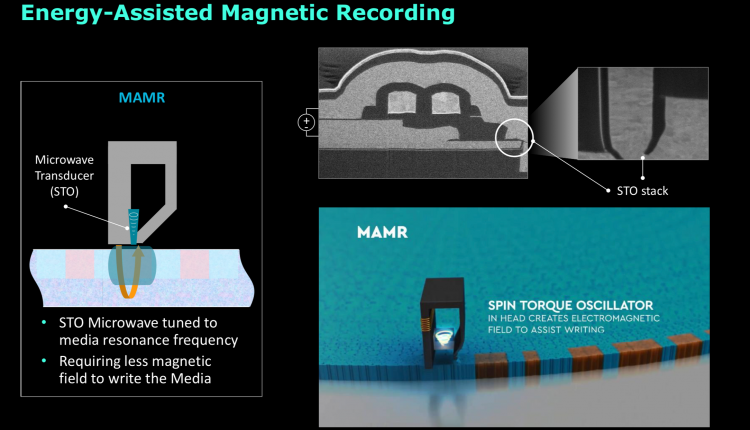Western Digital Corp. recently began delivering its 16 TB and 18 TB Ultrastar DC HC hard drives on a commercial scale. The new hard drives use energy-assisted perpendicular magnetic recording (ePMR) technology and are aimed primarily at cloud data centers.
“We received revenue from the sale of 16- and 18-TB in the first quarter of the fiscal year, ” said David Goeckeler, Executive Director of Western Digital, during a teleconference with analysts and investors. “The interest of customers in these products, in particular in our 18-TB hard drive, is very high, production growth is on schedule.”
The family of 3.5-inch Western Digital Ultrastar DC HC550 Hard Drives consists of two models with a capacity of 16 and 18 TB and is based on the sixth-generation helium platform – HelioSeal. The main differences between the new platform and the previous ones are the use of nine plates (for both 18- and 16-TB models), a new mechanical architecture, as well as energy-assisted perpendicular magnetic recording technology, ePMR.
This technology – about which Western Digital prefers to remain silent – uses a certain energy source to temporarily (at the time of recording) reduce the coercive force of the magnetic layer. Moreover, this source is not a laser (NFT – Near-Field Optical Transducer) or a microwave emitter (STO – Spin Torque Oscillator), which are used in the case of Heat assisted magnetic recording (HAMR) and microwave-assisted magnetic record (MAMR) technologies.

The other characteristics of Western Digital Ultrastar DC HC550 are quite typical for hard drives for cloud data centers: spindle speeds of 7200 rpm, large cache buffer, Serial ATA 6 Gb / s or SAS interfaces, an average annual workload of 550 TB, 2.5 million hours MTBF and a standard five-year warranty. Since the new hard drives will have to work in racks with hundreds of vibrating hard drives, we can assume that they are equipped with well-known technological solutions to increase their reliability and durability in such an environment. For example, the drive motor is attached to both the lower and upper planes of the HDD. In addition, hard drives are equipped with vibration and environmental sensors.

Western Digital does not declare the level of performance of the Ultrastar DC HC550 hard drives, but given the increased recording density relative to its predecessors, it is logical to expect that the read speed of new products is higher. At the same time, taking into account the increased capacity of the HDD, the performance of Ultrastar DC HC550 in the field of random read / write operations in terms of terabytes (IOPS / TB) is lower than that of devices of the previous generation. Thus, a number of Western Digital customers will have to reconfigure their software (and, at the same time, add caching SSDs) in order to maintain the quality of service (QoS) and other parameters at the same level when using 18-TB drives.
However, the advantages of 16- and 18-TB hard drives over previous-generation hard drives are so significant that they justify additional software configuration for a considerable number of cloud data center operators. So, the use of 18-TB hard drives allows you to store 4320 TB of data in a standard rack (240 HDD), which is 28% more than when using 14-TB drives, but at the same level of power consumption. The possibility of increasing the capacity of the server rack by almost a third without increasing energy consumption is a huge advantage for data center operators seeking to maximize storage capabilities per square meter and per watt.
Since Western Digital Ultrastar DC HC550 hard drives are currently being delivered to selected company customers, their cost is not announced. However, given the fact that we are talking about relatively limited supplies of unique data storage devices, we can assume that the company receives a premium for them.
Source : 3dnews
It’s really nice to have someone who is willing to share their knowledge with others!